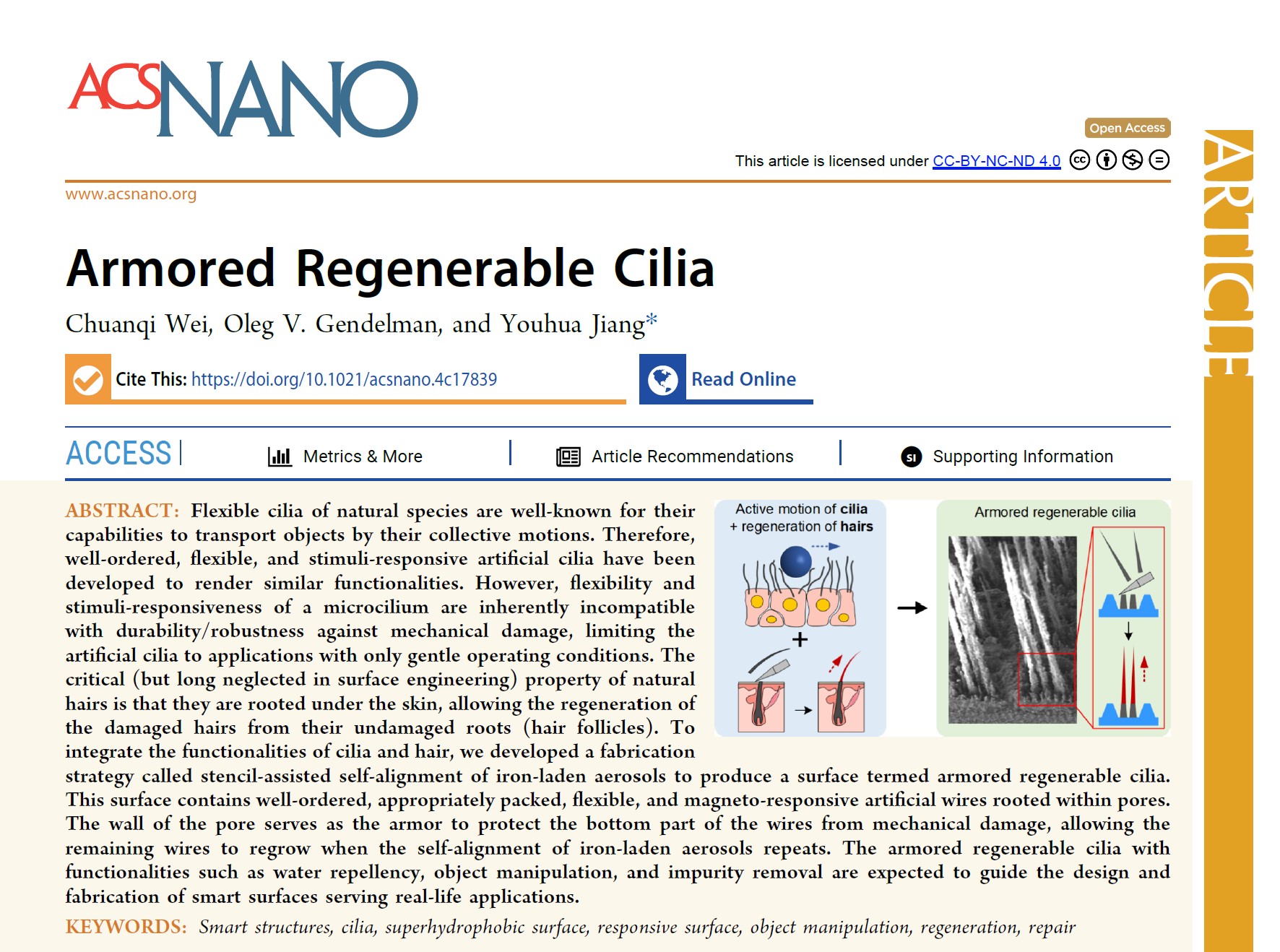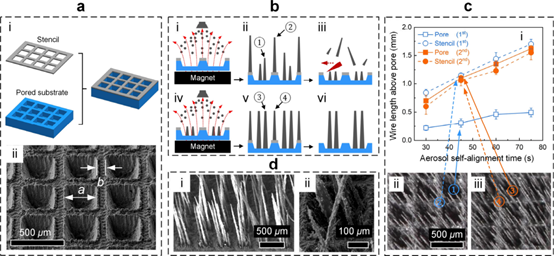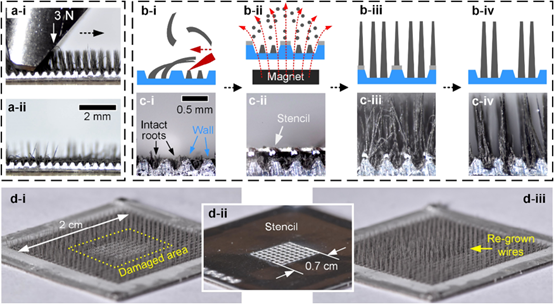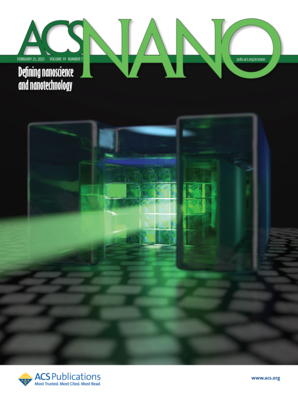PostTime:4/8/2025
Flexible cilia of natural species are well-known for their capabilities of transporting objects. For example, the movement of respiratory cilia can remove dust and pathogens from the respiratory system, protecting human health. Therefore, well-ordered, flexible, and controllable artificial cilia have been developed to render similar functionalities.
However, flexibility of a micro cilium is inherently incompatible with durability/robustness against mechanical damage. This limits their scope of application to gentle operating conditions. How can we overcome this challenge?

Recently, Prof. Youhua Jiang’s Research Group from Mechanical Engineering and Robotics of GTIIT published a research paper entitled "Armored Regenerable Cilia" in the top international journal "ACS Nano" (impact factor 15.8). They proposed a novel solution to this issue by developing a surface called "armored regenerable cilia". The paper's first author is Chuanqi Wei, a doctoral student, the second author Prof. Oleg Gendelman is the co-advisor from Technion, and Prof. Jiang is the corresponding author.
The critical property of natural hairs is that they are rooted under the skin, allowing the regeneration of the damaged hairs from their undamaged roots (hair follicles). Inspired by this, using self-alignment of iron-laden aerosols under a magnetic field, the authors fabricated magneto-responsive microwires only within metal micropores.

Fabrication process of armored regenerable cilia
When facing mechanical damage, the wall of the pore serves as the armor to protect the bottom part of the wires from mechanical damage, allowing the remaining wires to regrow when the self-alignment of iron-laden aerosols repeats.

The regenerative capacity of
armored regenerative cilia
The armored regenerable cilia demonstrate functionalities such as water proofing, object manipulation, and self-cleaning, solving the current problem that ciliated surfaces cannot be repaired. This study provides a new perspective of designing smart surfaces.
Paper:
https://doi.org/10.1021/acsnano.4c17839
ACS Nano

ACS Nano is a top - tier journal in nanoscience and nanotechnology, with high academic prestige and influence. Published by the American Chemical Society (ACS), it focuses on publishing high - quality research related to these fields. The journal is committed to advancing nanoscience and nanotechnology and promoting exchange and cooperation within the field.

Dr. Youhua Jiang received both his M.S. and Ph.D. from the Stevens Institute of Technology in 2014 and 2018, respectively. He then conducted two years' postdoctoral training at Northwestern University before joining the Mechanical Engineering department of GTIIT as an Associate Professor in October 2020.
Dr. Youhua Jiang specializes in Interfacial Phenomena with an emphasis on Soft and Smart Interfacial Phenomena, which involves droplet dynamics/statics on microtextured surfaces. His works (more than 40 papers) were mostly published in leading journals in Interfacial Phenomena and those as the first or corresponding authors appeared at Physical Review Letters, ACS Nano, Journal of Physical Chemistry Letters, Physical Review Fluids, Langmuir, Soft Matter, Journal of Colloid and Interface Science, Applied Physics Letters, ACS Applied Materials & Interfaces, etc. He received multiple grants in National Natural Science Foundation of China (NSFC) and Guangdong province. He also served as the reviewer for NSFC.
© GUANGDONG TECHNION-ISRAEL INSTITUTE OF TECHNOLOGY | 粤ICP备17036470号
